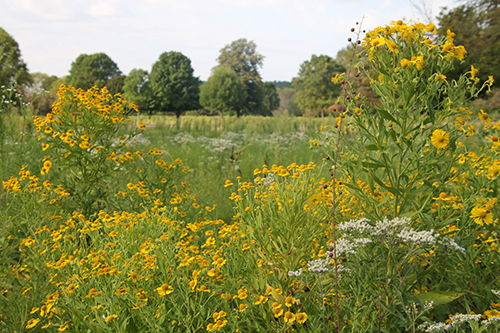
MIKE MILLER
While January might seem a strange time to think about butterflies, it is actually a great time to look back at the past season and start the process for planning for next year. In past columns, we have touched on the plight of the Monarch butterfly and its population decline over recent of decades. This migratory species depends on native milkweed populations as the food source for its caterpillars. As spring moves towards summer, Monarchs move north from their wintering grounds in Mexico, laying eggs on milkweeds to start new generations of butterflies to populate the Midwest and Great Lakes states. The 4th generation on Monarchs will then reverse their migratory patterns and fly south, all the way back to Mexico to overwinter and the whole process starts over again.
Biologists will conduct surveys and estimate the wintering populations in Mexico during the month of February. Initially, it seems that there is some good news for Monarch numbers. Early estimates indicate that this has been a good year for Monarch butterflies. Better than has been seen in many years. In trying to understand what has led to this bumper crop, biologists are studying both habitat and weather patterns. If you think back to last spring, you might recall the cold temperatures and snow in April. While it seemed to us like spring would never get here, it is likely the biggest factor in increased Monarch populations this year. Monarchs were forced to spend more time in southern states like Texas, where they were forced to linger, lay more eggs, and produce more caterpillars. Warm weather didn’t entice them to move north, where they might run into a late winter ice-storm. We also know, through climate modeling, that the conditions we saw last spring will become increasingly rarer if global temperature averages increase. So, it becomes chancier to depend on ideal weather conditions to help boost Monarch populations.
So what about habitat? The United States Fish and Wildlife Service (USFWS) has set a goal for habitat improvement. Biologists feel that if we can produce more milkweed in the migratory range of Monarchs, we can help stabilize the population. How much more milkweed? Lots! USFWS estimates that we will need an additional 1.5 billion milkweed stems in the US to help produce enough Monarchs to stabilize the population. Closer to home, in Illinois the goal is to produce 1.5 million new milkweeds to do our part. While this might seem to be an unreachable number, I think it’s actually quite possible to get there in a relatively short time. If you think about the math, it helps. It’s possible to expect an acre of habitat to host around 200 milkweed plants. If we can restore 7,500 acres to prairie in the state of Illinois, we can reach our 1.5 million goal easily. That’s not an impossible task.

This small area of healthy flood plane prairie is at Detweiller Riverside Park. The Peoria Park District will expand this type of habitat restoration over the next few years with a grant from the Illinois Department of Natural Resources’ Habitat Stamp Program. (PHOTO BY MIKE MILLER)
Locally, the Peoria Park District has just received a grant from the Illinois Department of Natural Resources’ Habitat Stamp Program. In this grant, we are partnering with USFWS, Pheasants Forever, and the Illinois Farm Bureau, to create 43 acres of new native prairie and pollinator habitat over the next two years. This includes new plantings in Donovan Park, Detweiller Riverside and Robinson Park. This project should produce around 8,600 new milkweed plants, of various species, available to Monarchs. We know that these plantings can be very productive and useful to Monarch Butterflies. We have seen the results at our Tawny Oaks prairie that we planted in 2012. In early September, this past summer, we tallied 186 Monarchs along the survey path, which only covers a small percentage of the habitat available to them. So there is hope that we can have a positive impact on the Monarch population, it just takes will-power, planning and work. If you are interested in being a part in our habitat efforts, reach out to me, or find more info by visiting www.peoriaparks.org.

Recent Comments